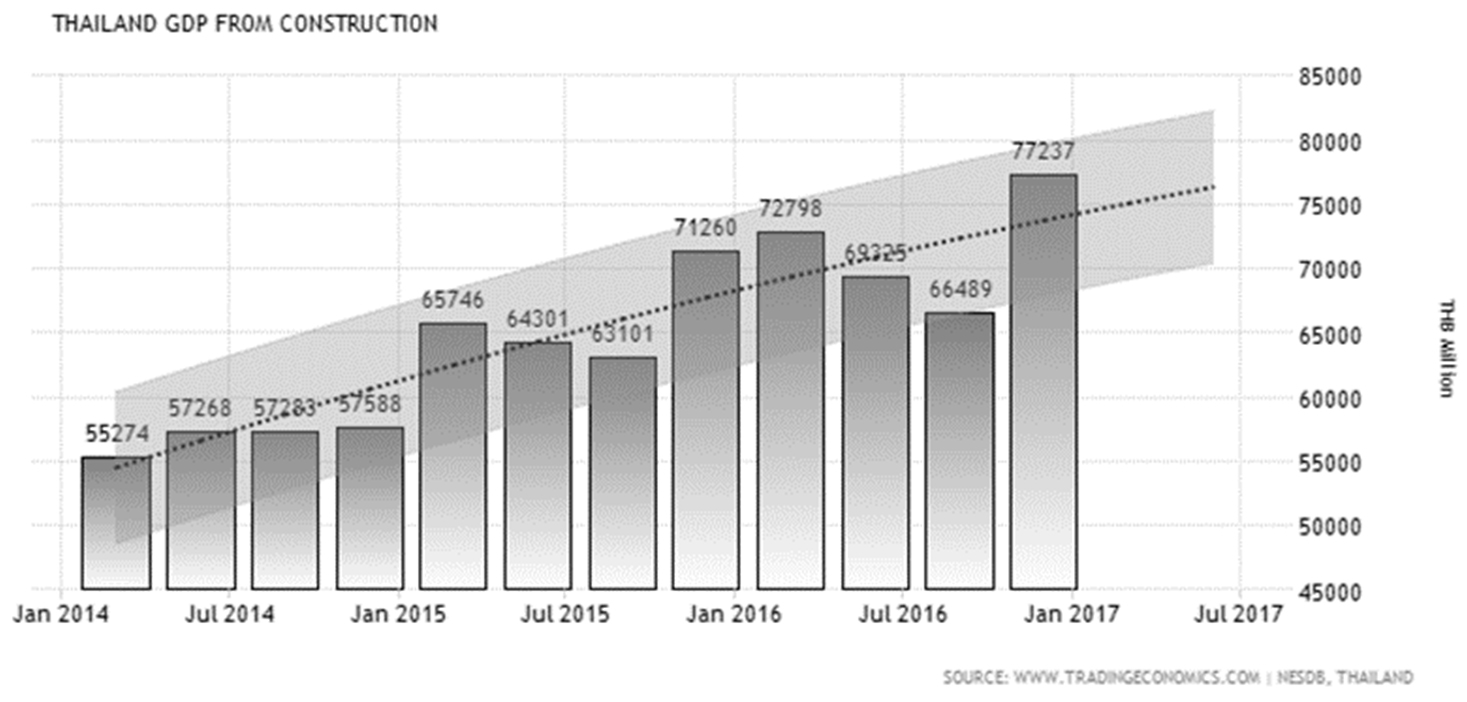The Capacity of Social Enterprises in Driving for Architectural Innovations
Main Article Content
Abstract
Successful architectural innovations generally originate from social enterprises. This observation may have impact on strategic management through society-centered methods for managing complex social and environmental issues. This issue has raised questions in the architecture and construction fields about whether social enterprises are capable of driving for rapid innovative development. Therefore, this research is aimed at studying the capabilities of social enterprises in developing innovations. This research employed a qualitative research process reinforced by quantitative data analysis. The researcher collected data from related documents to survey architectural achievements receiving world-class awards and gaining acceptance for innovative achievements in order to analyze and determine whether many social enterprises have steered architectural developments to the point where awards were won (indicating innovative achievements). The awarded businesses are categorized as follows: 1) social enterprises; 2) general businesses and 3) charity organizations. According to the findings, social enterprises are more capable of leading to innovation development than general business organizations and charity organizations. In particular, proof from the Holcim Awards shows social enterprises to be capable of passing selection rounds and able to win five world-class gold medal awards (100%) from only 65 achievements (30.23%) of 215 achievements entered into the first round of the competition. The findings show the capacity of social enterprises in driving for architectural innovations.
Downloads
Article Details

This work is licensed under a Creative Commons Attribution-NonCommercial-NoDerivatives 4.0 International License.
All material is licensed under the terms of the Creative Commons Attribution 4.0 International (CC-BY-NC-ND 4.0) License, unless otherwise stated. As such, authors are free to share, copy, and redistribute the material in any medium or format. The authors must give appropriate credit, provide a link to the license, and indicate if changes were made. The authors may do so in any reasonable manner, but not in any way that suggests the licensor endorses you or your use. The authors may not use the material for commercial purposes. If the authors remix, transform, or build upon the material, they may not distribute the modified material, unless permission is obtained from JARS. Final, accepted versions of the paper may be posted on third party repositories, provided appropriate acknowledgement to the original source is clearly noted.
References
Achavanuntakul, S. (2010). What is social enterprise?. Retrieved January 19, 2017, from http://www.socialenterprisescotland.org.uk/our-story/what-is-social-enterprise/
Barros, I. (2003). Design Strategy for Innovation and Organizational Effectiveness. Graduate College of the Illinois Institute of Technology, Doctor of Philosophy in Design. Chicago, Illinois: ProQuest.
BC Centre for Social Enterprise. (2013). What is social enterprise?. Retrieved January 19, 2017, from http://www.centreforsocialenterprise.com/what-is-social-enterprise/
Brennan, B. (2010). Muhammad Yunus On Microfinance. Retrieved March 19, 2017, from http://www.forbes.com: microfinance/#321d75b0420f
Grameen Bank. (n.d.). Founder: Short Biography. Retrieved April 20, 2017, from http://www.grameen.com/founder-2/
Kay, A., Roy, M. J., & Donaldson, C. (2016). “Re-imagining social enterprise”. Social Enterprise Journal, 12(2), 217-234.
Keeley, L. (2015). Ten Types of Innovation: The Discipline of Building Breakthroughs (J. Pusumas & S. Saeung, Trans.). Nonthaburi: IDC.
Kong, E. (2010). Innovation processes in social enterprises: an IC perspective. Journal of Intellectual Capital, 11, 158-178.
Laratta, R., Nakagawa, S., & Sakurai, M. (2011). Japanese social enterprises: Major contemporary issues and key challenges. Social Enterprise Journal, 7(1), 50-68.
Marketing Oops. (2017). Social business concept revealed. Retrieved June 7, 2018, from https://www.marketingoops.com/news/biz-news/ptt-social-enterprise/
National Statistics Office Thailand. (2014). Construction industry 2014. Retrieved March 19, 2017, from http://service.nso.go.th/nso/web/survey/surbus4-1-6.html
Pomerantz, M. (2003). The business of social entrepreneurship in a ‘down economy’. In Business, 25(2), 8-25.
Rahdari, A., Sepasi, S., & Moradi, M. (2015). Achieving sustainability through Schumpeterian social entrepreneurship: The role of social enterprises. Journal of Cleaner Production. 137(2), 347-360.
Social Enterprise Alliance. (2017). What is social enterprise?. Retrieved January 19, 2017, from https://socialenterprise.us/about/social-enterprise/
Social Enterprise Scotland. (n.d.). What is social enterprise?. Retrieved January 19, 2017, from http://www.socialenterprisescotland.org.uk/our-story/what-is-social-enterprise/
Social Enterprises UK. (2011). Social enterprise explained. Retrieved January 19, 2017, from http://www.socialenterprise.org.uk/uploads/editor/files/Publications/Social_Enterprise_Explained.pdf
Thai Social Enterprise Office. (2012). Basic concept of social enterprises. Retrieved January 19, 2017, from http://oranuch.nsdv.go.th/main/attachments/237_2012text1.pdf.pdf
Trading economics, (2016). Thailand GDP From Construction. Retrieved March 19, 2017, from www.tradingeconomics.com: http://www.tradingeconomics.com/thailand/gdp-from-construction/forecast
Tumwongsa, N. (2016). Business and industry trends for 2016-2018: Construction business. Retrieved March 17, 2017, from www.krungsri.com: https://www.krungsri.com/bank/getmedia/274329bf-8ca4-48d9-928a-1b292bef2b69/IO_Construction_Contractor_2016.aspx
Yamlaor, P. (2016). Understand the 8 issues of social enterprise. Retrieved January 19, 2017, from http://www.salforest.com/blog/8-issues-se#_edn1
Youngsuksathaporn, P. (2009). A Fundamental Theory of Innovation. Productivity World, pp. 87-94.
Yunus, M. (n.d.). What is social business?. Retrieved January 19, 2017, from http://www.yunussb.com/about/


